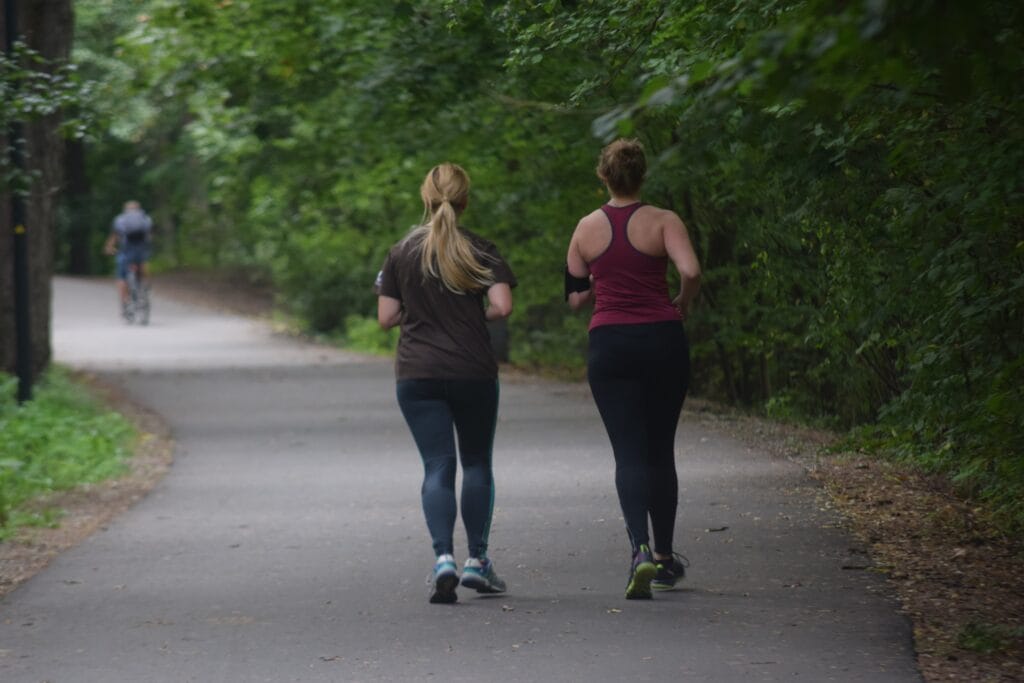What is Walking Yoga,

when did it start, why is it being liked, how to do it and where? What is Walking Yoga? Walking Yoga is a light and mindful practice that combines walking with yoga postures (asanas) and breathwork. It turns a simple walk into an apprehensive, low-impact drill that benefits both body and mind. According to Tom’s Guide, it combines both the physical movement of walking and the stillness of yoga, helping you connect with your surroundings and develop better stress-preventing body awareness. When and how did it become popular? The trend has emerged in recent years — especially in 2025 — in wholesomeness circles in the USA and online. Sites such as Tom’s Guide and Marie Claire have highlighted it as “a new apprehensive walking category.” International portals like Times of India also punctuate this hybrid style, which now makes it easier to incorporate slow, meditative exercise into a busy lifestyle.
Why is Walking Yoga Valuable?
1. Combination of physical and mental benefits Walking helps with cardiovascular health, weight control and energy Yoga helps with flexibility, balance and relaxation.
2. Stress and anxiety reduction Meditation in yoga postures and breathing addresses mood and anxiety — it may prove even more effective than walking.
3. Connection to nature and mindfulness Being outdoors Walking and yoga become an experience — not just exercise — that increases mental clarity and calmness.
4. Creativity and sleep Walking yoga promotes creative ideas and helps end the day peacefully and induces better sleep.
How to do Walking Yoga? (Step-by-Step Guide)
1. Choose the route Choose a familiar park, neighborhood trail, or a safe path around you. This makes it easier to focus.
2. Start slow Start with a short walk — say 1 km — and first wake up the body by doing introductory stretches like Mountain Pose or Standing Side Bend.
3. Synchronize your breathing and walking For example, breathe in for three steps, out for five — this way your movement and breathing go together, which increases mindfulness.
4. Include poses in between the walk After every 1 km (or whenever you feel like it) stop for a few minutes in an asana like Warrior, Tree, Downward Dog or Child’s disguise.
5. Be intuitive Move according to your body and environment — if it is cold, take short breaks; in hot weather you can also walk barefoot.
6. Concluding Calm Pose To finish, stand in Mountain Pose and take a deep breath and feel the experience — it brings stability in the end.
Where is Walking Yoga suitable? Large park or green trails — where there is calm atmosphere and openness. In cities like New York’s Central Park, guided programs like the Sunrise Yoga Walk are available — a 1.5- to 2-mile walk with restorative yoga in between (approximately $49).
Try a college campus, nature reserve, or neighborhood — wherever it’s easy to integrate mindfulness outside. What benefits will frequenters get from Walking Yoga? Simple and accessible. No mats, machines, or special equipment needed — just comfortable shoes and open space. Simultaneous fitness and internal clarity. It’s not just exercise, but an apprehensive experience. Easy to fit into busy USA life.
A little walk and a little yoga — even in small chunks — can be incorporated daily. — Conclusion Walking Yoga is an exciting and highly relevant fitness trend, especially for those who can’t find time for home workouts or long yoga sessions. It combines walking and yoga to provide a tripartite benefit — physical, mental, and natural connection. With simple practice, deep awareness, and low expectation, it’s becoming an influential and sustainable movement across the USA.